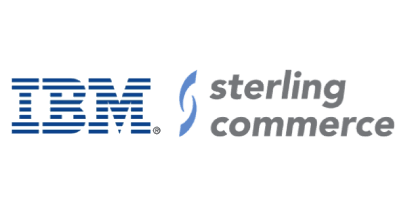Blue Yonder vs IBM Sterling – 10 Differences, 20 Pros & Cons
OneBrowsing

(Reviews: 450)
Est. users: 20K
Price Ranges: $99 - $199 - $499


(Reviews: 150)
Est. users: 20K
Blue Yonder vs IBM Sterling
Blue Yonder (formerly JDA Software) focuses on end-to-end supply chain solutions and demand forecasting powered by AI and machine learning. In contrast, IBM Sterling specializes in B2B integration and supply chain solutions, with strengths in enabling seamless, secure data exchange and order management across various business networks.
Blue Yonder
- Supply chain management solutions
- Specializes in planning and execution
- Offers demand forecasting tools
- Focus on retail and manufacturing
- Includes AI and machine learning
- Provides warehouse management systems
- Acquired by Panasonic in 2021
- Known for comprehensive analytics
Key Differences
-
Supply Chain Planning
Blue Yonder is known for its strong capabilities in supply chain planning, offering advanced demand forecasting and inventory optimization solutions. It is particularly recognized for its use of AI and machine learning to predict demand accurately.
Winner: Blue Yonder
-
Integration Capabilities
IBM Sterling provides robust integration capabilities, allowing seamless connectivity with multiple enterprise applications and facilitating end-to-end supply chain visibility and automation.
Winner: IBM Sterling
-
Scalability
Both platforms offer scalable solutions, but IBM Sterling's cloud-based architecture is designed to support large-scale enterprises with extensive supply chain networks across the globe.
Winner: IBM Sterling
-
User Interface and Usability
Blue Yonder is often praised for its intuitive user interface, making it easier for users to navigate and utilize its features effectively, with minimal training required.
Winner: Blue Yonder
-
AI Integration
Blue Yonder leverages advanced AI-driven technology to enhance its predictive analytics, making it superior in providing actionable insights and proactive decision-making capabilities.
Winner: Blue Yonder
-
Collaboration Features
IBM Sterling offers strong collaboration tools that enable better communication and coordination across different parts of the business and with trading partners, thus improving overall supply chain responsiveness.
Winner: IBM Sterling
Distinct Features
| Blue Yonder | IBM Sterling |
|---|---|
| Luminate Platform for digital fulfillment | B2B Integration and Managed File Transfer |
| AI-based demand forecasting and planning | Order Management System with advanced orchestration |
| End-to-end supply chain visibility through Control Tower | Blockchain-based Supply Chain Transparency |
| Transportation Management Solution with dynamic price discovery | IoT and Edge Computing for real-time data insights |
| Retail Category Management for optimizing product assortments | Sterling Inventory Visibility for improved inventory optimization |
Pricing Overview
Blue Yonder
- Standard Plan ($99) - Suited for startups and small enterprises
- Pro Plan ($199) - Designed for medium-sized businesses and growing enterprises
- Enterprise Plan ($499) - Recommended for large enterprises and corporations
Indepth Overview
| Blue Yonder | IBM Sterling | |
|---|---|---|
| Supply Chain Management | ||
| Demand Forecasting | ★4.5 - Highly accurate predictions using advanced algorithms. | ★4.0 - Good predictions, comparatively slower updates. |
| Inventory Optimization | ★4.2 - Real-time visibility and management of inventory. | ★4.7 - Excellent optimization algorithms with AI integration. |
| Collaboration Tools | ★4.0 - Strong focus on cross-functional collaboration. | ★3.8 - Decent collaboration features but needs improvement. |
| Omnichannel Fulfillment | ||
| Order Management | ★4.6 - Robust management across various channels. | ★4.5 - Comprehensive and customizable management system. |
| Shipping Integration | ★4.3 - Wide range of shipping options supported. | ★4.5 - Strong partnerships with major carriers. |
| Returns Management | ★4.2 - Easy to manage returns across channels. | ★4.0 - Effective but slightly complex return process. |
| Analytics and Reporting | ||
| Real-Time Analytics | ★4.8 - Superior real-time data visualization tools. | ★4.4 - Good data insights but less visual appeal. |
| Predictive Analytics | ★4.7 - Advanced predictive capabilities with AI. | ★4.5 - Reliable predictions, integration with Watson AI. |
| Custom Reports | ★4.3 - Flexible reporting features, user-friendly interface. | ★4.0 - Custom report creation, requires some technical skills. |
| Unusual Features | ||
| Sustainability Tracking | ★4.5 - Unique feature for monitoring sustainability metrics. | |
| Machine Learning | ★4.8 - Integrates easily into existing operations for optimization. | |
| Blockchain Integration | ★4.6 - Leveraging blockchain for transparency in supply chains. | |
| Smart Contracts Support | ★4.3 - Facilitate automated contract execution via smart technology. | |
| Integration Capabilities | ||
| APIs Availability | ★4.7 - Extensive APIs for seamless integration. | ★4.5 - Good API support but not as extensive. |
| Third-Party Applications | ★4.4 - Broad support for various third-party integrations. | ★4.6 - Excellent sense of compatibility with third-party tools. |
| User Interface | ||
| Dashboard Customization | ★4.6 - Highly customizable and intuitive dashboard. | ★4.2 - Customizable but slightly clunky interface. |
| User Experience | ★4.7 - Clean design with user-friendly navigation. | ★4.1 - Functional but less focus on modern UI design. |
| Support and Documentation | ||
| Customer Support | ★4.5 - Responsive support team available for help. | ★4.2 - Good support but response times need improvement. |
| Documentation Quality | ★4.4 - Comprehensive and easy-to-follow documentation. | ★4.3 - Well-written but can be overwhelming. |

Comments